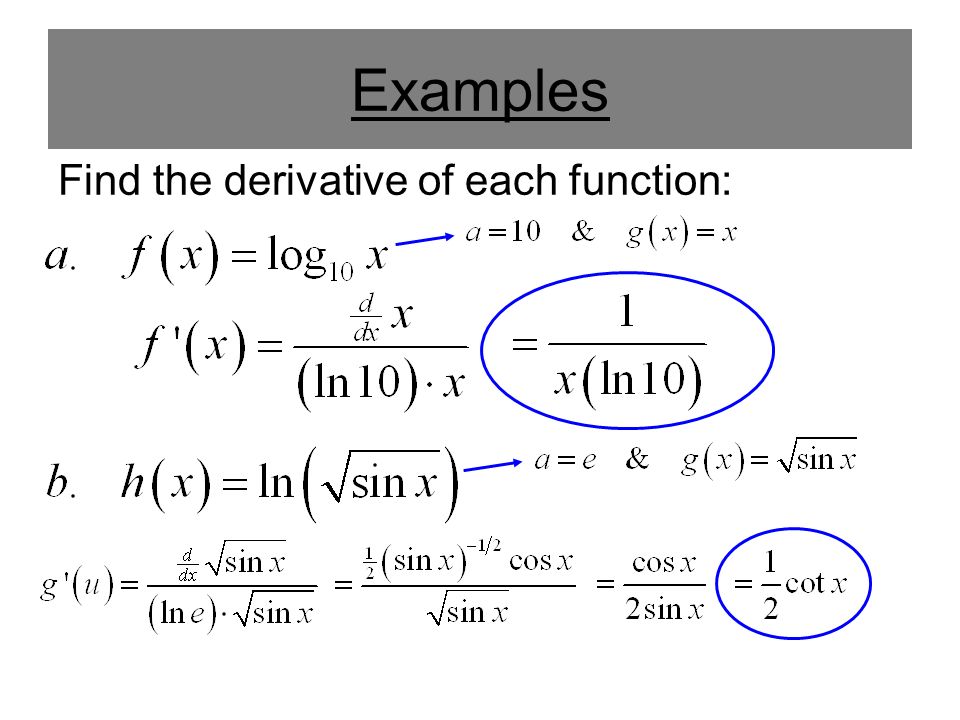

The product property of logs states that ln(xy) ln(x) + ln(y). Since ln is the natural logarithm, the usual properties of logs apply. image1.png Now use the property for the log of a product. Finding the derivative of ln(2x) using log properties.
#HOW TO TAKE THE DERIVATIVE OF LOG HOW TO#
The following are equivalent: d/(dx)logex1/x If y ln x, then (dy)/(dx)1/x We now show where the formula for the derivative of loge x comes from, using first principles. How to Use Logarithmic Differentiation Take the natural log of both sides.

In numerical analysis, the condition number is the infinitesimal relative change in the output for a relative change in the input, and is thus a ratio of logarithmic derivatives. The derivative of the logarithmic function y ln x is given by: d/(dx)(ln\ x)1/x You will see it written in a few other ways as well.In the particular case, the derivative is given by. Suppose we are given a pair of mutually inverse functions and Then. In mathematical finance, the Greek λ is the logarithmic derivative of derivative price with respect to underlying price. As the logarithmic function with base, and exponential function with the same base form a pair of mutually inverse functions, the derivative of the logarithmic function can also be found using the inverse function theorem.Exponential growth and exponential decay are processes with constant logarithmic derivative.This derivative is fairly simple to find, because we have a formula for finding the derivative of log a. Is therefore a pullback of the invariant form. Alright, now we can get to the derivative of log ( x ). loga(x) logb(x) logb(a) You can apply the formula as follows: log2(x) ln(x) ln(2) As 1 ln(2) is just a constant and the derivative of ln(x) is 1 x, our derivative is: d dx log2(x) d dx ln(x) ln(2) 1 ln(2) 1 x 1 xln(2) Answer link. Is invariant under dilation (replacing X by aX for a constant). The according formula to change a logarithmic expression from the base a to the base b is. Logarithmic derivatives can simplify the computation of derivatives requiring the product rule while producing the same result. ( log u v ) ′ = ( log u + log v ) ′ = ( log u ) ′ + ( log v ) ′. For example, since the logarithm of a product is the sum of the logarithms of the factors, we have Applying the rules of logarithms BEFORE you differentiate makes it a lot easier, because we have a bunch of terms. Many properties of the real logarithm also apply to the logarithmic derivative, even when the function does not take values in the positive reals. Goodbye, nasty product and quotient rules. 2 Computing ordinary derivatives using logarithmic derivatives.


 0 kommentar(er)
0 kommentar(er)
